Joy, the last dog of the Romanovs (PHOTOS)
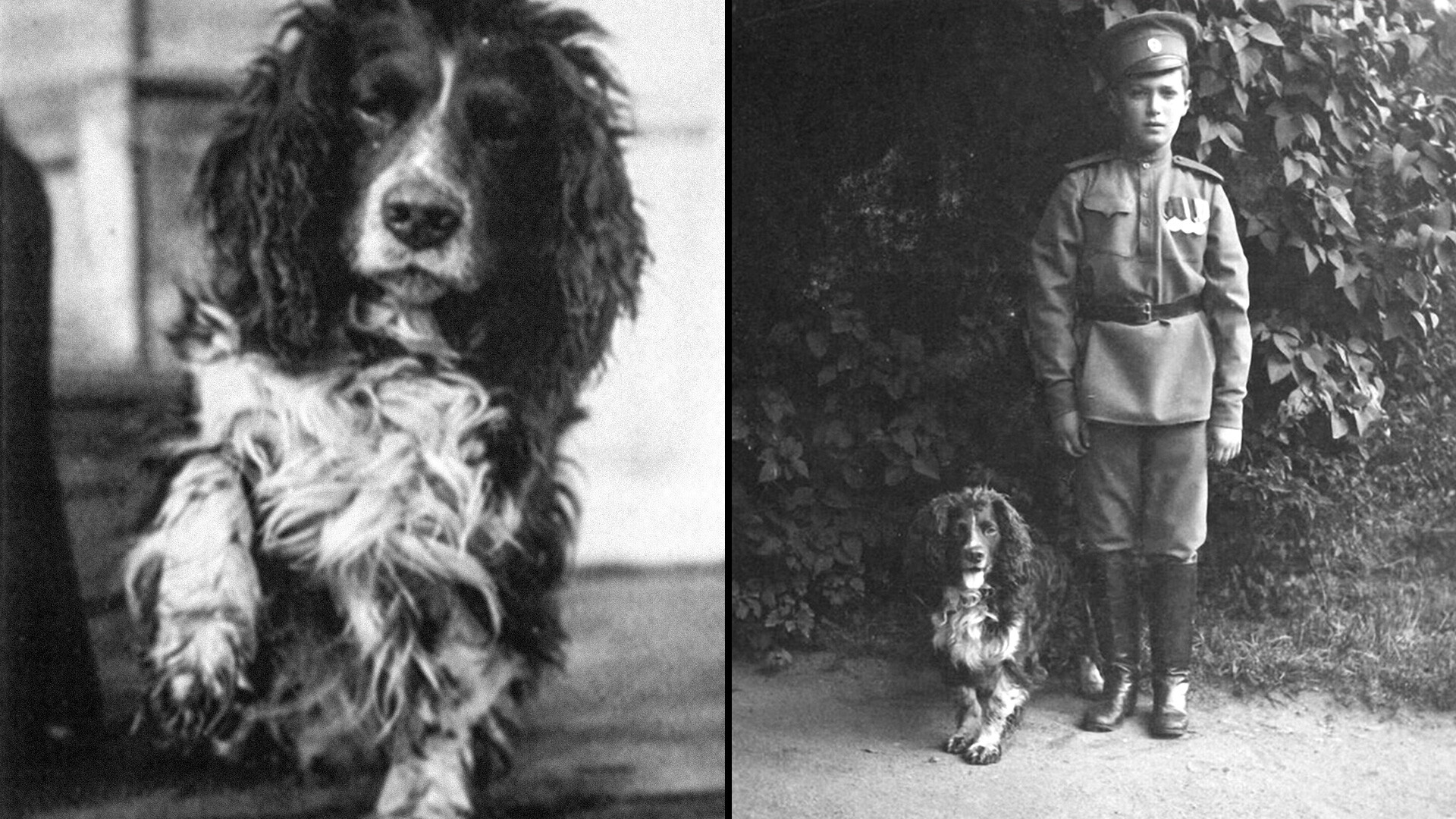
When the Romanov family arrived at the Ipatiev House in Yekaterinburg, they had three dogs with them, all black: a French bulldog named Ortipo that belonged to Grand Duchess Tatiana, a Cavalier King Charles Spaniel of Grand Duchess Anastasia named Jemmie and a cocker spaniel of Tsarevich Alexei named Joy.
“I discharged my revolver at the condemned. I do not know the results of my shots, as I had to go immediately to the attic, to the machine-gun. <…> When I ran into the attic, I saw that the light was on in the Mining Institute across the street. Shots could be clearly heard and the strong howl of the tsar’s dogs,” Alexei Kabanov, a participant in the execution of the royal family, said during a 1965 interview. When Kabanov came back down from the attic, everyone was already dead, but “the dog Jack, as the one not producing howls, was not touched”, the executor remembered, mistaking the dog’s name.
How did Joy survive?
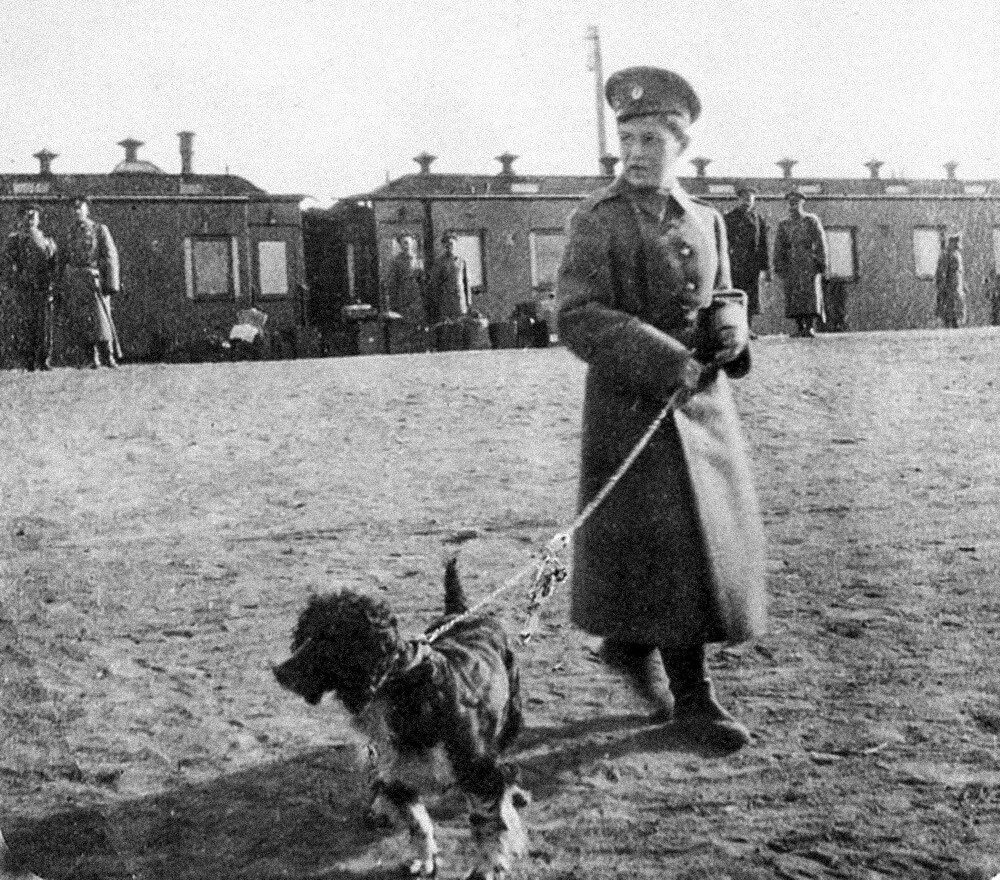 Tsarevich Alexei and his dog Joy at a train station.
Tsarevich Alexei and his dog Joy at a train station.
Who gave Tsarevich Alexei this dog and when is unknown. The name was given to it by Empress Alexandra Feodorovna, the favorite granddaughter of Queen Victoria, who was also very fond of dogs.
All three dogs accompanied their owners – from Tsarskoye Selo to Tobolsk and, from there, to Yekaterinburg. Jemmie was killed with the tsar’s family in the basement; Ortipo, who remained in the house, was killed later for howling loudly. But Joy survived – because he remained silent.
“The door from the hallway to the rooms where the royal family lived was still closed, but there was no one in the rooms. It was clear: not a sound was heard from there. Before, when the royal family lived there, one could always hear life in their rooms: voices, footsteps. At this time, however, there was no life there. In the hall, near the door, their little dog stood all the time, waiting to be let into the room. I remember well, I also thought at the time: you wait in vain,” Anatoly Yakimov, the guard of Ipatiev House, said during the 1919 interrogation.
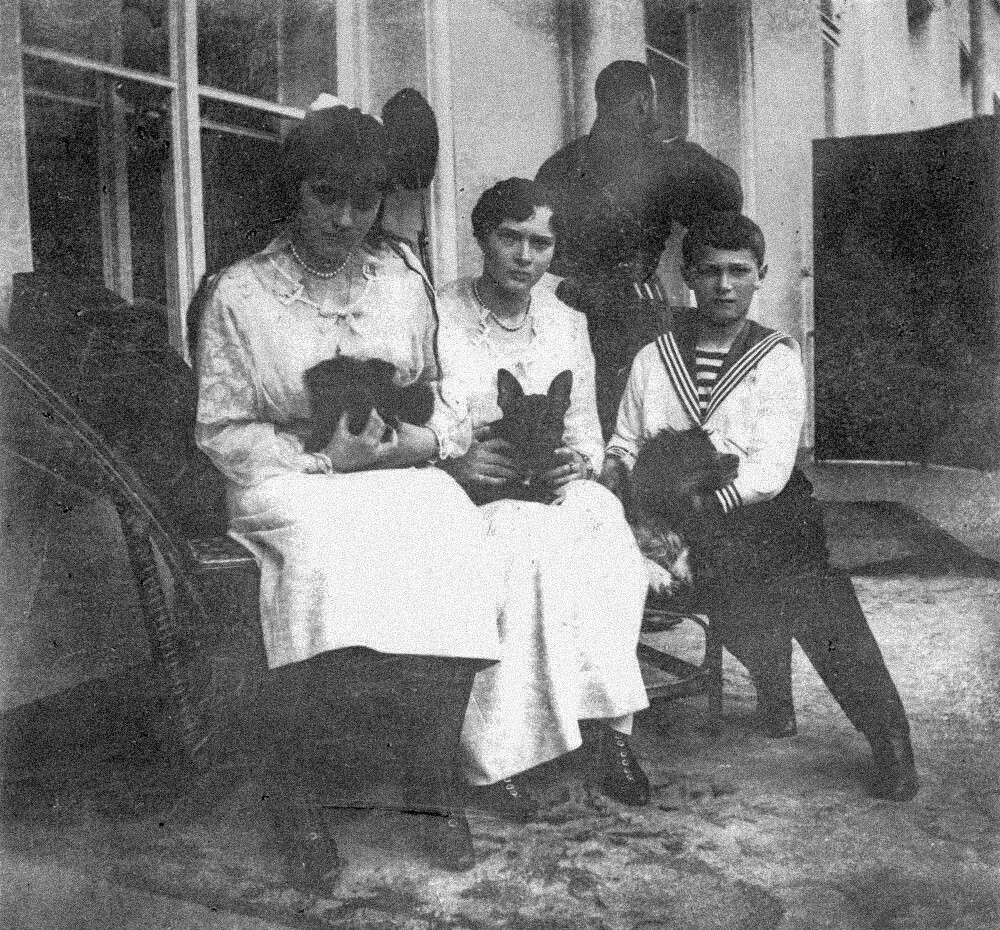 The royal children and their dogs, left to right: Grand Duchess Anastasia and Jammie, Grand Duchess Tatiana and Ortipo, Tsarevich Alexei and Joy.
The royal children and their dogs, left to right: Grand Duchess Anastasia and Jammie, Grand Duchess Tatiana and Ortipo, Tsarevich Alexei and Joy.
The dog was taken by one of the guards, Mikhail Letyomin, who also plundered some of the royals’ possessions. Joy became the main evidence by which the marauder was discovered by the investigation of the White Army, which occupied Yekaterinburg. Another 79 items were confiscated from Letyomin.
“The Czechs [Czechoslovak Corps in the Russian Army], seizing Yekaterinburg, found a poor little animal, half-starved, running around the yard of the Ipatiev House. The dog seemed to be looking for his master all the time and his absence made him so sad and depressed that he barely touched his food, even when he was affectionately cared for,” wrote Baroness Sophie Buxhoeveden, a lady-in-waiting to Empress Alexandra Feodorovna in her ‘The Life and Tragedy of Alexandra Feodorovna, Empress of Russia’.
“I went to see Joy. And he, apparently in his canine naivety, thinking that his masters were bound to show up with me, became visibly animated. I had never seen a dog so excited. When I called for him, he instantly jumped out of the carriage and rushed across the platform to me, bouncing and making wide circles around me and did not cling to me with his front paws, but paced on his hind legs like a circus dog. General Dieterikhs told me that he had never greeted anyone like that before and I attributed it to the fact that my clothes, which were the same ones I had worn in Tobolsk, still had a familiar smell, even though I did not particularly caress him. When I left, Joy lay all day at the door through which I had left. He refused to eat and slipped back into his usual state of despair.”
Joy is NOT buried at the British king’s estate
 A selfie Alexei made with his dog.
A selfie Alexei made with his dog.
The heir’s spaniel was taken by General Mikhail Dieterikhs, head of the “white” investigation into the execution of the tsar’s family. Then Joy ended up with Colonel Pavel Rodzianko, a Russian who had accompanied the British military mission of General Sir Alfred Knox in Russia> Rodzianko was also a famous sportsman and riding instructor. After the October 1917 coup, Rodzianko enlisted in the British army and emigrated to Great Britain.
In England, Rodzianko opened a riding school for aristocrats. One of his students was future King Edward VIII of Britain. Subsequently, Paul Rodzianko’s nephew, Basil (Rodzianko, 1915-1999), a bishop of the Orthodox Church in America, said that Joy became the property of King George V, to whom Rodzianko told of the death of his cousin Nicholas II and his family. Allegedly, Joy lived with the King of England and was buried in the Royal Dog Cemetery at Windsor. But, this is only a legend.
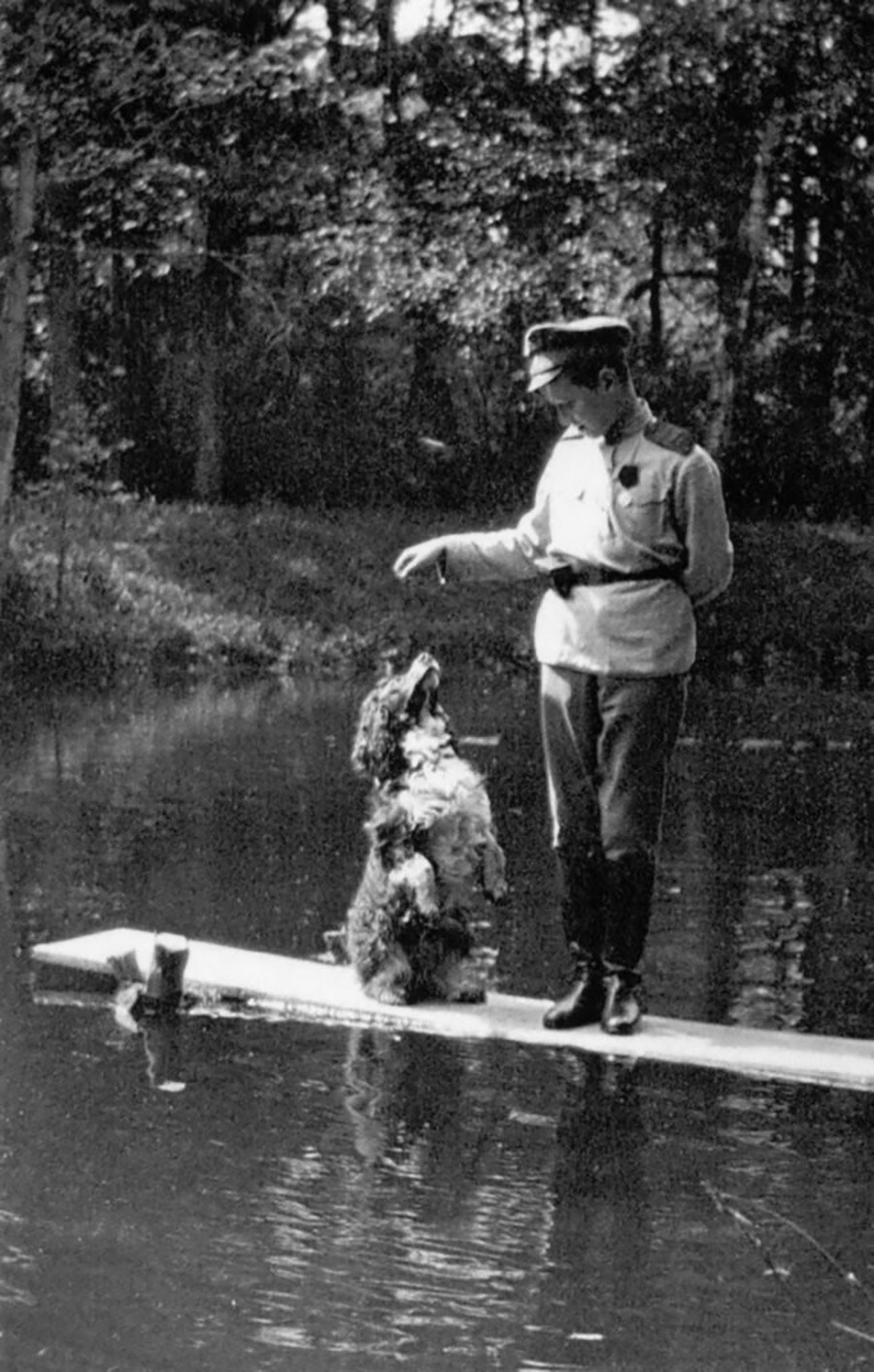 Alexei playing with his dog at the Tsarskoe Selo park.
Alexei playing with his dog at the Tsarskoe Selo park.
In his autobiography ‘Tattered Banners’ (London, 1938), Pavel Rodzianko writes of his encounter with George V: “I have described the cold empty rooms and bloody cellar of the Ipatiev House, my fruitless search in the cemetery and the grim journey through the Siberian forest to find a handful of ashes. <…> I told him about Joey, who runs through my garden. He seems quite happy, but looking into those light brown eyes, I often wonder what he remembers.”
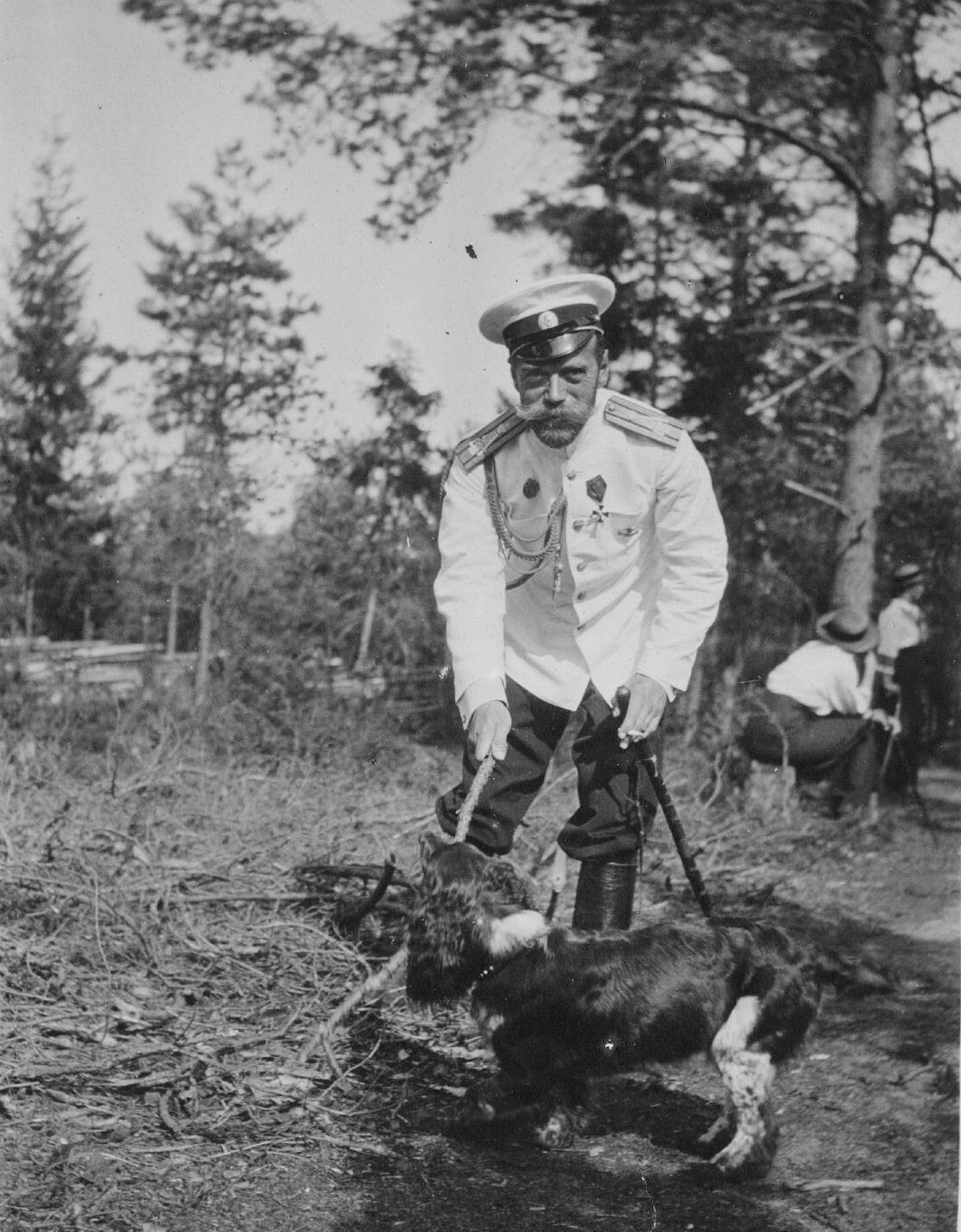 Nicholas II playing with Joy, his son's dog.
Nicholas II playing with Joy, his son's dog.
Joy died at Windsor, however not at the royal court, but at Colonel Rodzianko’s small estate of Sefton Lawn, whose park adjoined the royal park.
“Every time I walk past my garden at Windsor, I think of the little dog’s grave in the bushes with the ironic inscription ‘Here rests Joy’. For me, this little stone marks the end of the empire and way of life,” Pavel Rodzianko wrote in ‘Tattered Banners’.

